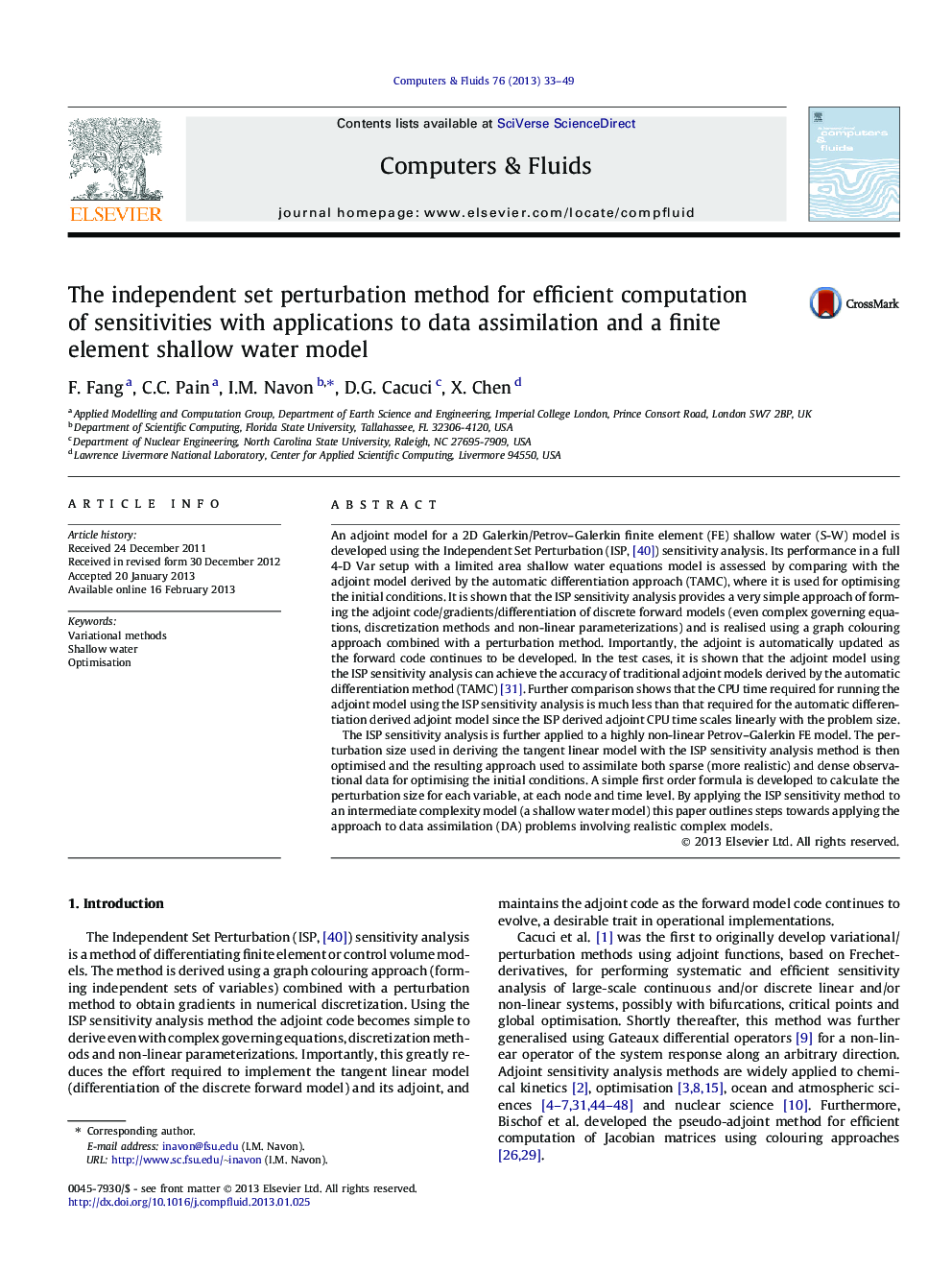| کد مقاله | کد نشریه | سال انتشار | مقاله انگلیسی | نسخه تمام متن |
|---|---|---|---|---|
| 762167 | 1462734 | 2013 | 17 صفحه PDF | دانلود رایگان |

An adjoint model for a 2D Galerkin/Petrov–Galerkin finite element (FE) shallow water (S-W) model is developed using the Independent Set Perturbation (ISP, [40]) sensitivity analysis. Its performance in a full 4-D Var setup with a limited area shallow water equations model is assessed by comparing with the adjoint model derived by the automatic differentiation approach (TAMC), where it is used for optimising the initial conditions. It is shown that the ISP sensitivity analysis provides a very simple approach of forming the adjoint code/gradients/differentiation of discrete forward models (even complex governing equations, discretization methods and non-linear parameterizations) and is realised using a graph colouring approach combined with a perturbation method. Importantly, the adjoint is automatically updated as the forward code continues to be developed. In the test cases, it is shown that the adjoint model using the ISP sensitivity analysis can achieve the accuracy of traditional adjoint models derived by the automatic differentiation method (TAMC) [31]. Further comparison shows that the CPU time required for running the adjoint model using the ISP sensitivity analysis is much less than that required for the automatic differentiation derived adjoint model since the ISP derived adjoint CPU time scales linearly with the problem size.The ISP sensitivity analysis is further applied to a highly non-linear Petrov–Galerkin FE model. The perturbation size used in deriving the tangent linear model with the ISP sensitivity analysis method is then optimised and the resulting approach used to assimilate both sparse (more realistic) and dense observational data for optimising the initial conditions. A simple first order formula is developed to calculate the perturbation size for each variable, at each node and time level. By applying the ISP sensitivity method to an intermediate complexity model (a shallow water model) this paper outlines steps towards applying the approach to data assimilation (DA) problems involving realistic complex models.
► A new ISP approach is used for implementation of a nonlinear FE SW adjoint model.
► ISP reduces the CPU time required for differentiating complex models.
► ISP enables a modelling framework – allows all models to be differentiated within it.
► ISP enables the model to be easily implemented and maintained.
► ISP enables one to extract fine grain parallelism due to the use of colouring methods.
Journal: Computers & Fluids - Volume 76, 10 May 2013, Pages 33–49